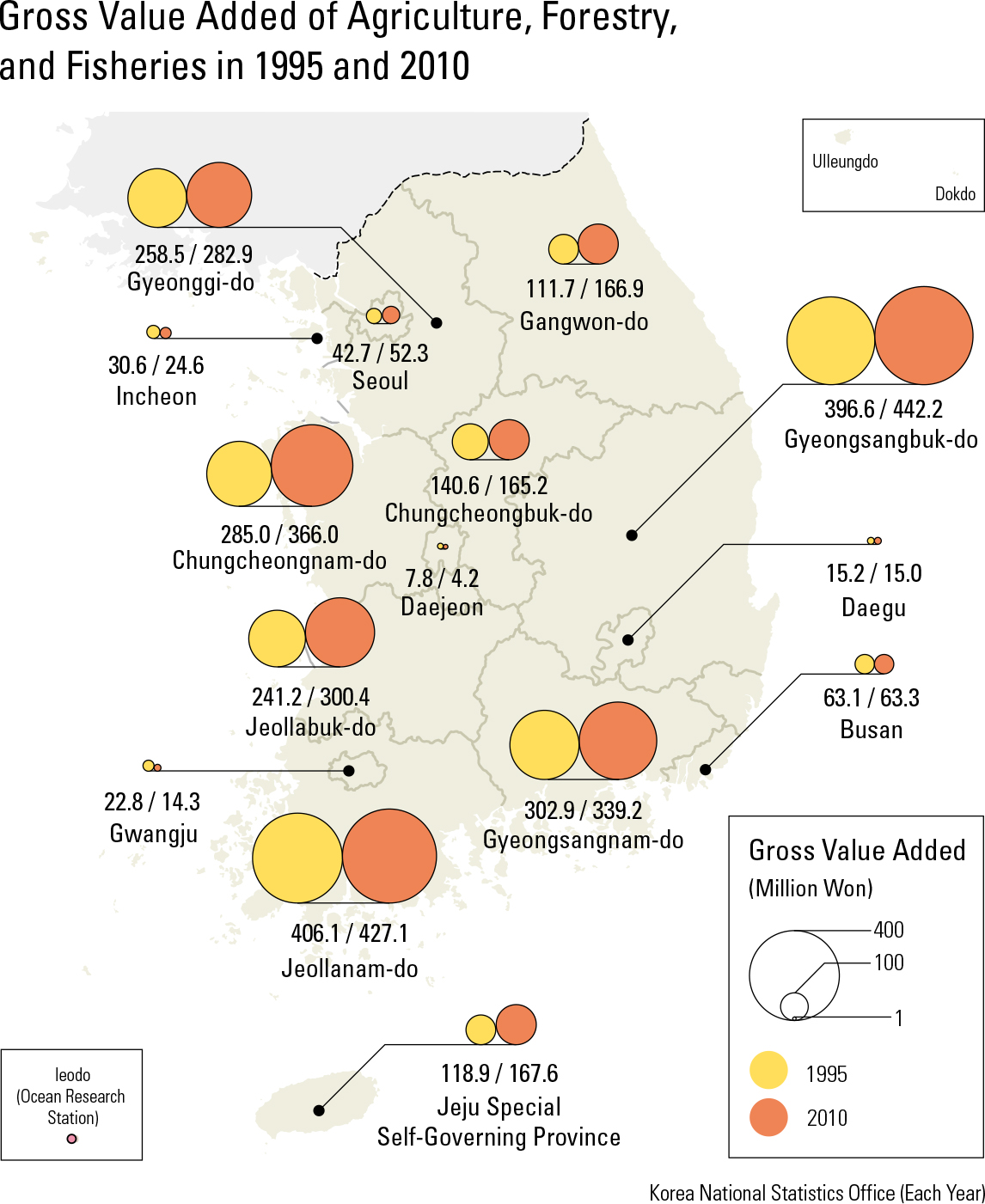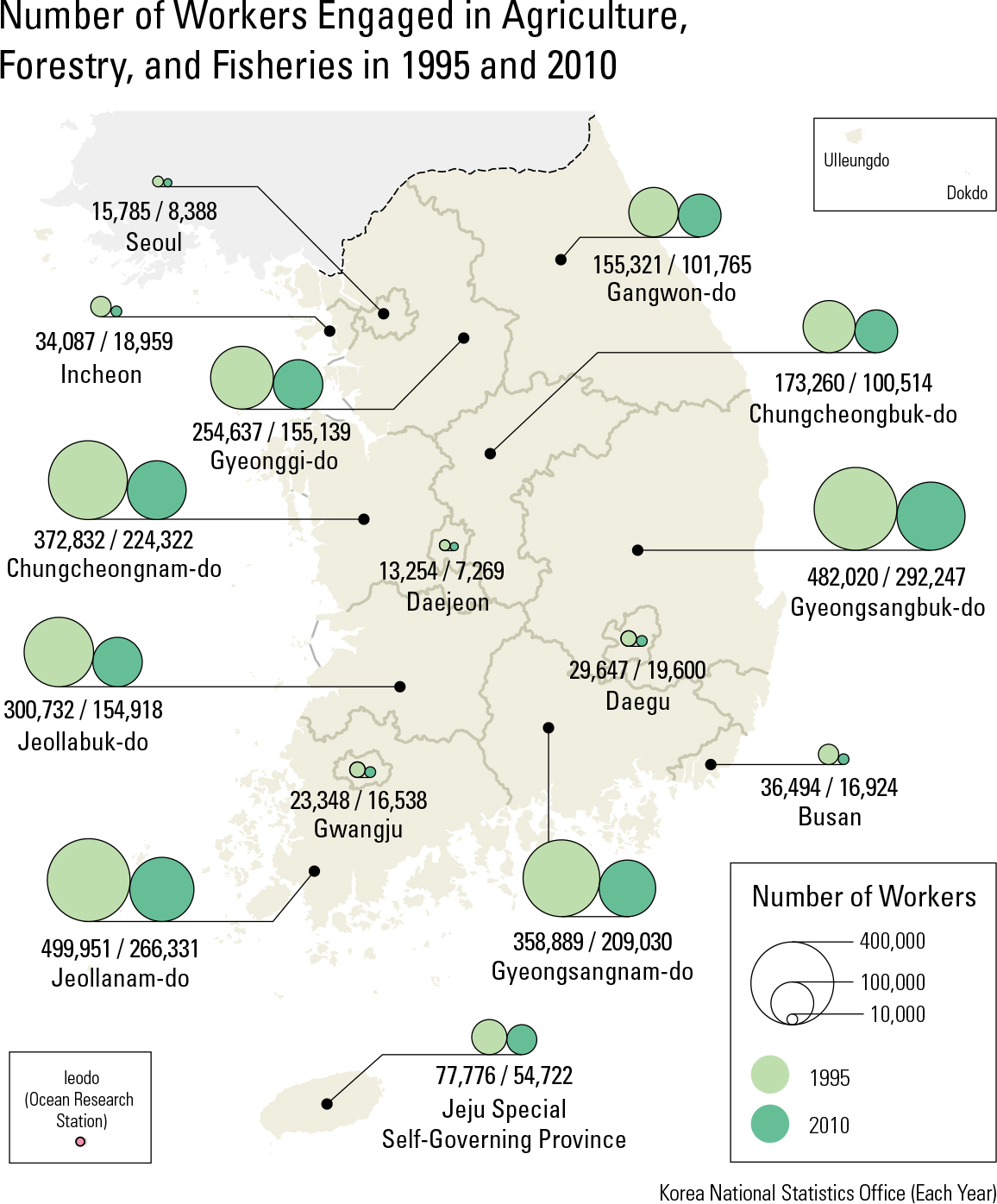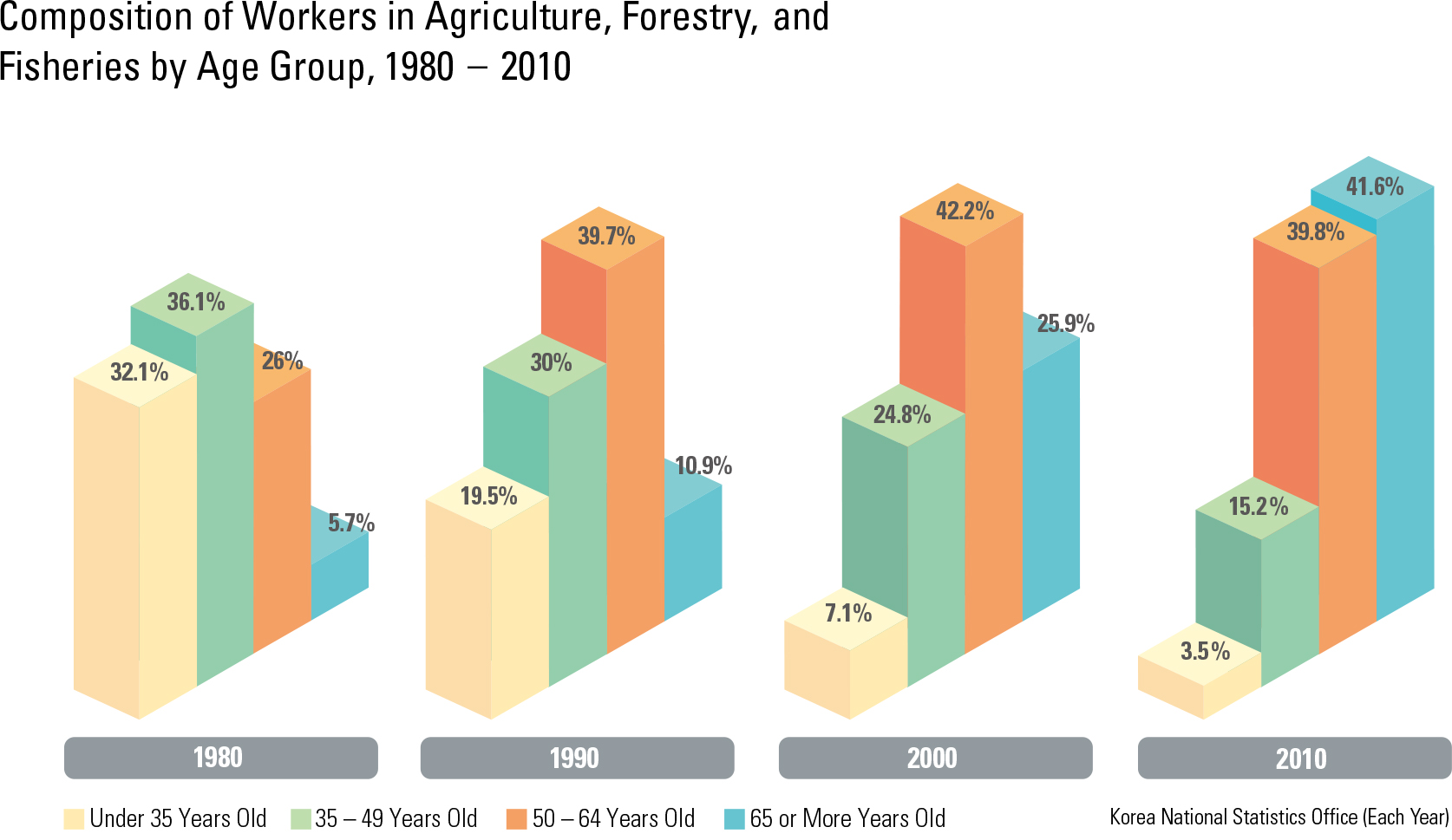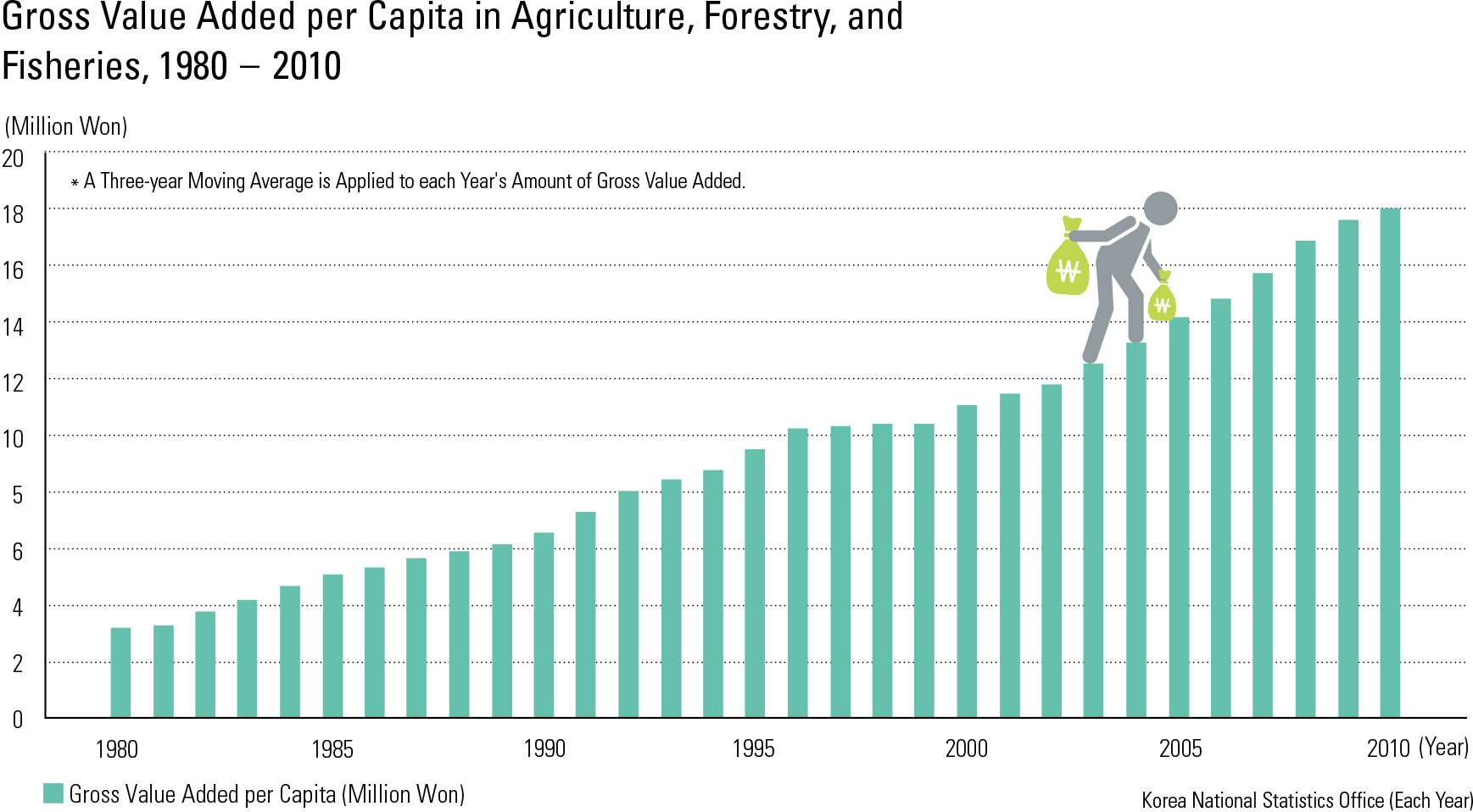English III
The age of employees in agriculture, forestry, and fisheries has shifted significantly since the 1980s. In 1980, most (32.1%) of the agriculture, forestry and sheries workers were young (under age 35), while only 5.7% were over age 65. But in 2010, the age distribution was reversed, at 3.5% and 41.6%, respectively. Aging of the farming population is expected to intensify for the time being. But new changes seem to appear: though engaged in urban non-agricultural sectors previ- ously, some people (about 10,000 per year) have begun to migrate to rural areas to farm. Among them, over 70% are younger than age 50, and over one third of them are younger than age 40. As of now, however, the implications of this J- or U-turn migration for the demographic structure of the agricultural sector in the future are hard to predict. Gross value added by the country's agriculture, forestry, and fisheries has increased steadily be- tween 1995 and 2010. The output values for ag- riculture, forestry, and fisheries of Gangwon-do, Chungcheongnam-do, Jeollabuk-do, and Jeju-do reflect relatively higher increases compared to other provinces. The same areas also revealed fewer declines in employment in the agriculture, forestry, and sheries industries during the same period. These regional differences are believed to be related to the extent of the impact of urban- ization and the development of non-agricultural sectors.
page_2 |




